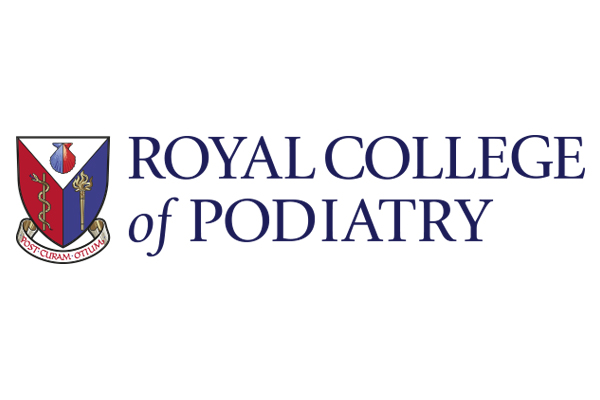The Royal College of Podiatry Post-nominals

With the Royal status comes new post-nominal letters for our members to use after their name. What are they and how should they be used?
With the Royal status comes new post-nominal letters for our members to use after their name. Not every organisation has post-nominals letters to show membership. For example, membership of the Health and Care Professions Council (HCPC), the regulatory body for podiatrists, does not provide post-nominals. The College has the privilege of offering its members the use of these letters to denote membership or fellowship of the organisation.
As of 26 June 2021, the post-nominals will be:
- MRCPod (Member of the Royal College of Podiatry)
- FRCPodM (Fellow of the Royal College of Podiatry in Podiatric Medicine)
- FRCPodS (Fellow of the Royal College of Podiatry in Podiatric Surgery)
- ARCPod (Associate of the Royal College of Podiatry)
These replace the previous post-nominal letters of MCPod, FCPodM, FCPodS and ACPod.
We know that post-nominals can be confusing. What order do you list them in? Where should you use them? As our members will now be updating their professional identity we spoke to Debrett’s, the leading authority on etiquette in Great Britain since 1769. Here they advise our members on how and when to use their new post-nominals.
About post-nominals
The use of letters after an individual’s name (post-nominal letters) follows a prescribed order. The abbreviation ‘Bt’ (for a baronet) and ‘Esq’, if applicable, precede all other letters.
The series of other letters are grouped, and ordered, either by regulations or by custom as follows:
- Orders and decorations conferred by the Crown (Crown honours)
- Crown appointments in the following order: Privy Counsellor, Aide de Camp to HM, Honorary Physician to HM, Honorary Surgeon to HM, Honorary Dental Surgeon to HM, Honorary Nursing Sister to HM, and Honorary Chaplain to HM (PC, ADC, QHP, QHS, QHDS, QHNS and QHC)
- Queen’s Counsel, Justice of the Peace and Deputy Lieutenant: thus QC, JP and DL
- University degrees
- (a) Religious orders
(b) Medical qualifications - (a) Fellowships of learned societies
(b) Royal Academicians and associates
(c) Fellowships, memberships, etc, of professional institutions, associations, etc, and
(d) Writers to the Signet, see p 153 - Member of Parliament
- Membership of one of the armed forces, such as RN or RAF.
Post-nominal letters indicating academic qualifications
Most podiatrists will hold a Diploma (DPodM) or Bachelor’s Degree (BSc or BSc(Hons)) and possibly hold postgraduate certification such as a Master’s Degree (MSc) or Postgraduate Diploma (PGDip). These would be laid out as such:
- Jane Bloggs BSc (Hons) MSc
- Jane Bloggs DPodM BSc
- Jane Bloggs BSc (Hons) PGDip
Only qualifications pertaining to your field should be displayed. For example, a master’s degree in engineering would not be listed on podiatric correspondence as this implies a higher level of attainment in podiatry than that which has been obtained.
Post-nominal letters denoting membership of professional bodies
After you have listed your academic letters, it is customary for those denoting membership of professional bodies to follow. If you are entitled to use more than one set of professional post-nominals, those belonging to Royal organisations would be listed first. Where a Fellowship is held this would replace the letters denoting membership of the same organisation. Some examples of how your post-nominals may look are:
- Jane Bloggs BSc (Hons) MRCPod
- Jane Bloggs BSc (Hons) PGCert FRCPodM
- Jane Bloggs BSc (Hons) MRCPod MFPM RCPS (Glasg)
Typically, no more than three post-nominals would be utilised at one time. However some individuals will display more where all are significant to the field of practice.
What not to use
Historical post-nominals which are no longer in active use should not be used. These include:
- MChS (Member of The Society of Chiropodists and Podiatrists). These were removed from active use in 2018 when the Society of Chiropodists and Podiatrists became The College of Podiatry
- SRCh (State Registered Chiropodist). These were removed from use when State Registration ceased in 2004. The State Registration system was replaced by the Health and Care Professions Council.
Whilst it is tempting to add 'HCPC' or 'HCPC Reg' alongside your other qualifications, there are no registered post-nominal letters that accompany HCPC registration. As such it is inappropriate for them to be listed as a post-nominal. Instead, registrants may use an approved HCPC logo or enter the statement 'registered with the Health and Care Professions Council' or 'HCPC Registered' on a separate line underneath their name.
How to punctuate post-nominals
Typically, post-nominal letters will not be punctuated in between the letters. The use of full stops should therefore be avoided. B.S.c. (Hons) and M.R.C.Pod are examples of incorrect usage. Instead, these should be laid out as BSc (Hons) MRCPod. Capitalisation is also important. Post-nominals are all registered to ensure that no two organisations are presenting the same letters so post-nominals should be laid out as advised by the issuing body.
When to change to your new Royal College identity
Thank you to Debrett’s for their assistance in this article.
